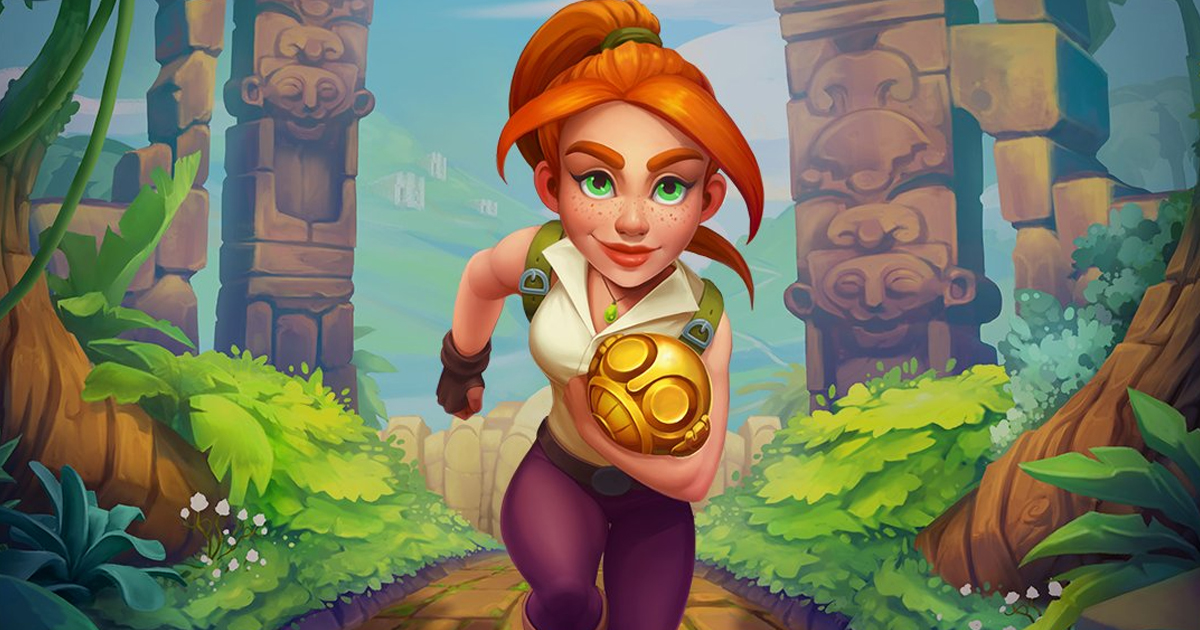How Imangi plans to develop the Temple Run universe and why she has never spent money on UA
Imangi employs only 40 people, but this relatively small team has big ambitions in the market. In a new interview, the studio talked about plans to develop the Temple Run brand and explained why it never spent money on paid user engagement.Imangi CEO Walter Devins shared details about the studio’s new global development strategy in a conversation with GamesIndustry.biz .
Temple Run SuccessAt the time of the release of the first Temple Run, only five people worked in Imangi.
Devins was a freelance lawyer at the studio at that time (he became CEO just a couple of years ago).
The team had to manually respond to thousands of emails every day, while simultaneously fixing bugs and creating new content. In the same mode, the studio released Temple Run 2 in 2013, which became her second hit.
Devins agrees that Imangi is kind of lucky to be on the market at the right time. In 2011-2012, the practice of attracting users for a fee was not yet widespread in the mobile industry. At that time, specialists were just learning how to properly collect and process data, so studios had to look for other ways to promote.
For Imangi, word of mouth has become such a way. The Temple Run series has always grown and still continues to attract new players solely thanks to reviews from other users, brand awareness and features in app stores. Therefore, even now the studio does not see the point in spending extra money from the budget on UA.
“Every month millions of new players come to our game. Among them there are many 13-year-old users who have just bought their first phone. Parents perceive Temple Run as a family game, they trust it and believe that it is suitable for children,” said Devins.
According to Devins, an important factor in the long-lasting success of Imangi was the slow and gradual growth of the studio. “Many gaming companies fail when they take on too much: attract too much money, hire more and more people and eventually lose their identity. We decided to go the other way,” he stressed.
New games and future plansWhen Devins took over as CEO, he thought about how to expand the Temple Run brand and find new opportunities for the studio to grow.
Earlier this year, he presented a five-year franchise development plan to Imangi’s board of directors.
The first step on a new path for the studio was the release of Temple Run: Puzzle Adventure, which was released in Apple Arcade in September.
Scopely studio, which understands this genre much better than Imangi, undertook to create a match-3 project for the popular franchise. In addition, the audience of puzzles and Temple Run intersects — they are played mainly by women. The company has not yet disclosed the indicators of Puzzle Adventure, but notes that this is a great start to a new stage.
Temple Run: Puzzle AdventureThe next step was the conclusion of cooperation with A. Smith & Co — the production company responsible for the creation of the TV show “American Ninja Warrior” (American Ninja Warrior).
She will be engaged in the production of the series on Temple Run. As Devins notes, this universe has a large background and a rich history, which many simply do not realize yet.
“Temple Run and the runner genre are our main quest. We will also have side quests like match-3 games or other projects that we are currently thinking about. This is a more strategic approach. This will allow us to plan for several months and years ahead,” said Devins.
All future Imangi projects will be based on the Temple Run franchise in one way or another. The studio does not plan to create new IP and brands yet. According to Davis, the Temple Run universe has too much and unrealized potential — and now is the time to develop this particular direction.
